Top>Opinion>Eco-Products 2010 and the Proposal for the Ecovillage Fund
 Index
Index
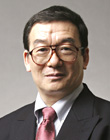
Toshio Ogata [Profile]
Eco-Products 2010 and the Proposal for the Ecovillage Fund
Toshio Ogata
Professor of Macroeconomics and Ecological Economics, Faculty of Economics, Chuo University
Research interests: Global warming and ecological economic management, and Asian internships.
1. Eco-Products exhibition
Eco-Products 2010―one of the largest exhibitions in Japan bringing together companies and organizations providing environmentally and ecologically friendly products and services from around the country―was held for three days, December 9-11 (Thu-Sat) at Tokyo Big Sight in Ariakenomori, Tokyo. This exhibition was hosted by Nikkei Inc. and the Japanese Environmental Management Association for Industry and supported by various governmental agencies and organizations, in cooperation with educational organizations such as the Environmental Protection Association of Private Universities. The main theme of this year―which is the twelfth year since the exhibition started―was "Green x Clean Revolution! Expand the power to connect lives to the world" Setting a target of 25% reduction in greenhouse gas emissions by 2020, this year's exhibition attracted attention throughout the nation and even from overseas as an arena for governments, industries, universities, and citizens to get together and consider what to do over the next decade to achieve the target. This exhibition incorporated more events than usual dealing with the protection and management of biological resources, in light of the discussion at the Conference of the Parties to the Convention on Biological Diversity (COP10) held in Nagoya this year.
2. Eco-Products 2010
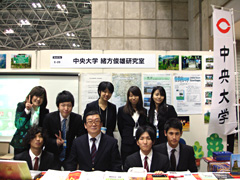
According to the announcement from the office of the venue, private companies and organizations including universities and other educational institutions, NGOs, and governmental agencies presented some 745 exhibits, attracting 183,142 visitors to the exhibition over those three days.
The venue was very large, incorporating six halls in the East Exhibition Hall of Tokyo Big Sight, which is an international convention complex located in Ariakenomori. Environmental business models and the future low-carbon city zone were presented in the East Hall 1; local foods, the comprehensive manufacturing exhibition, and the bioplastics pavilion in the East Hall 2; the eco-products zero-garbage strategies and restaurants serving organic food in the East Hall 3; the environmental communication stage in the East Hall 4; ecological living, booths for NPOs/NGOs, booths for universities and other educational institutions, booths for environmental measures promoted by universities, and booths for recruitment and career consulting related to environmental business in the East Hall 5; and the biodiversity zone, the exhibition about eco-life starting with forests, and many other exhibitions for introducing environmental business or environmental projects by various companies and organizations in the East Hall 6. Other programs this year also included a booth for experiencing battery-assisted bicycles, trial ride of eco-cars, nature observation, a booth for environmental measures promoted by universities, and many seminars and symposia provided by experts, which were attended by a wide variety of participants ranging from elementary school students and working adults, to visitors from abroad and job-hunting university students.
3. Successful performance by our seminar students
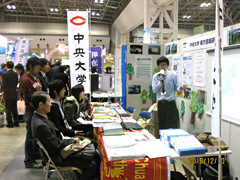
In a booth two meters long by four meters wide, our Ogata Lab played video about our activities overseas with a projector and displayed posters, pictures, and project diagrams on the walls, with research books, papers, project proposals, and other activity products presented on a long table, through cooperation among second- and third-year seminar students from the Faculty of Economics and Faculty-Linkage Program seminar students. Last year, we only presented the results of the overseas training called Asian Internship conducted by the Ogata Seminar. About this presentation, however, we received a question from an ordinary working person about what issues we intended to raise. In response this year, we made presentations in the morning and evening every day in the form of proposals based on field work and social surveys. The Faculty-Linkage Program Seminar waste materials team proposed a compost system for utilizing kitchen garbage thrown away by hotels as a resource, which was an enhanced version of the presentation they made at a research institute of the Vietnamese Ministry of Natural Resources and Environment. The town development group proposed their vision of sustainable cities based on the theories of The Economy of Cities by Jacobs and Social Common Capital by Hirofumi Uzawa, as well as surveys at Kamakura in Japan and Hanoi in Vietnam. From the seminar in the Faculty of Economics, the environment group proposed the REDD Plus Model that seeks development of local communities controlling deforestation in keeping with climate change issues discussed at the United Nations in order to protect forests in Vietnam, and the local development group presented the E-Community Model that would enable symbiotic enhancement of Ecology = Economy based on social surveys and tree planting activities at Japan-Vietnam Friendship Forest they conducted when they visited ecovillages in Vietnam. These presentations were highly admired by visitors to the exhibition, so much so that some people from educational institutions ranging from junior high schools to universities requested in the question and answer session that presenters visit their schools to give presentations to their students in class next year.
4. Results and lessons
Our lab is now promoting studies on ecovillages. This is a development from the fundamental model for re-building the sustainable economy that is a significant issue for the 21st century. In so doing, we are conducting joint case studies and field studies every year with the National Economics University in Hanoi (NEU)―which is a Vietnamese university that concluded an international exchange agreement with us―and a research institute in the Vietnamese Ministry of Natural Resources and Environment. This year, in celebration of Chuo University's 125th anniversary since its establishment, the international conference "The Green Economic Corridor and Ecovillage Development" was held in Hanoi to discuss how to drive development of the social infrastructure as the economic corridor and coexistence with natural environments or traditional culture. During this discussion, we learned that there had already been nineteen ecovillages in Vietnam. We then obtained permission from the Vietnamese government to visit all the ecovillages. Exchanging opinions with mayors and members of the People's Committees of those villages, we found that they were struggling to protect their home mountains and their natural environment, and a mere visit for the purpose of study would never bring them out of poverty. So, based on discussions with the villagers, we considered the possibility of organizing an Ecovillage Project which utilizes their community power connected with support for ecological measures given from Japan. This idea ultimately led to the proposal of the Ecovillage Fund (eFund), which was discussed with participants at the Eco-Products exhibition. We hope that to offer Visible Hands, as along the lines of J. M. Keynes' famous words "Cool head, but warm heart."
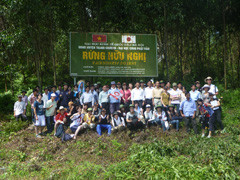
Japan-Vietnam Friendship Forest: The forest surrounding ecovillages in Vietnam restored through joint planting activities.
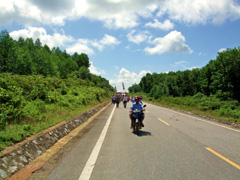
Japan-Vietnam Friendship Forest is on both sides of the New Ho Chi Minh Trail in Nghe An Province. The forest yield from photosynthesis will provide developmental resources for the ecovillages in five to seven years.
Click here for the culture program Corridor of Knowledge (Ecological Economics: Balance between Symbiosis and Competition, Episode 45), edited by the author.![]()
Click here for the culture program Corridor of Knowledge (Ecological Economics 2.0: Practice, Episode 58), edited by the author.![]()
- Toshio Ogata
Professor of Macroeconomics and Ecological Economics, Faculty of Economics, Chuo University
Research interests: Global warming and ecological economic management, and Asian internships. - Professor Ogata was born in 1945 in Kanagawa Prefecture. He is currently a Professor on the Faculty of Economics, Chuo University. He left the Doctoral Program at the Graduate School of Economics in Chuo University after taking all the required units. Professor Ogata's major publications include Undercurrent of Modern Economics [Kindai Keizaigaku no Teiryu] (Chuo University Coop Publishing); Introduction to Economics for the Symbiotic Society [Kyosei Shakai no tame no Keizaigaku Nyumon] (co-authored, Nippon Hyoron Sha); Global Warming and Economic Development [Chikyu Ondanka to Keizai Kaihatsu] (co-authored, The University of Tokyo); Economics of M. Kalecki [Shijo to Keikaku no Shakai Shisutemu] (authored by M. C. Sawyer, co-translated, Nihon Keizai Hyoronsha); and Ecovillages: New Frontiers for Sustainability [Sekai no Ekobirejji] (authored by Jonathan Dawson, co-translated, Nihon Keizai Hyoronsha). He was a visiting fellow for Rutgers, The State University of New Jersey from 1980 to 1982. Professor Ogata is also currently a member of the editorial board of Journal of Post Keynesian Economics, a board member of the Japan CIRIEC, and director of the Research Group on Environment and Economy at the Institute of Economic Research, Chuo University.
- Click here for his website Chuo University Toshio Ogata Laboratory.

- Research Activities as a Member of Research Fellowship for Young Scientists (DC1), Japan Society for the Promotion of Science (JSPS) Shuma Tsurumi
- Important Factors for Innovation in Payment Services Nobuhiko Sugiura
- Beyond the Concepts of Fellow Citizens and Foreigners— To Achieve SDGs Goal 10 “Reduce Inequality Within and Among Countries” Rika Lee
- Diary of Struggles in Cambodia Fumie Fukuoka
- How Can We Measure Learning Ability?
—Analysis of a Competency Self-Assessment Questionnaire— Yu Saito / Yoko Neha - The Making of the Movie Kirakira Megane








